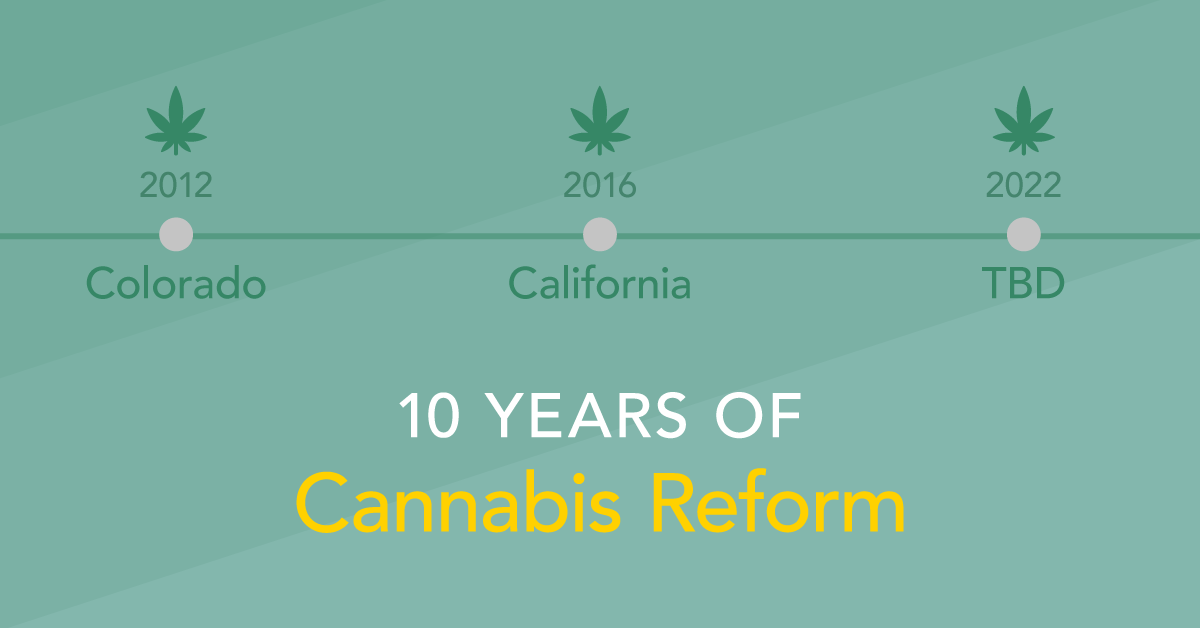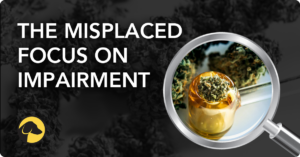
10 Years of Cannabis Reform: Where Do We Go Next?
In December 2012, the state of Colorado officially added the legalization of recreational cannabis use to its state constitution.1 It was a decision that, in addition to creating access to cannabis legally, also had several unintended consequences. So, as we approach December 2022 and the 10th anniversary of that decision, it’s time to assess where we are now with cannabis reform and be intentional about what we should try to accomplish in the next decade.2
This blog starts a year-long conversation leading up to the 10th anniversary of Colorado’s legalization of recreational cannabis use. I will write about various topics and invite others to reflect on what has unfolded since 2012 and what they would like to see occur by 2032. These conversations will primarily focus on the impact on employers and law enforcement but will take an occasional detour to explore some other topics.
LEGISLATION BEFORE EDUCATION
The first topic in this series of blogs is how the choice to allow the legalization of both medical and recreational cannabis use without educating the population about its effects will continue to have unintended negative consequences. The lack of education continues to create serious risks for many individuals, including employers, employees, and everyone else in their communities.
EMPLOYERS
Since employees first began using recreational cannabis, employers have not had the information they needed to respond effectively. There are still no employer education programs to teach them:
- The window for peak cannabis impairment lasts only a few hours
- Cannabis tests of oral fluid, urine, and hair – the cornerstone of today’s drug testing programs – provided positive results for days, weeks, or months after impairment subsides
- The need for a new technology that limits the detection windows
- How to balance workplace safety with employee privacy and how to evolve their drug testing programs to maintain the proven benefits of deterrence and safety
Ten years later, employers are still trying to educate themselves. They want to make the right choices and need to keep their employees, customers, and communities safe, but they frequently struggle with how to proceed.
How do they evolve cannabis testing policies that consider the varying legal status of cannabis across states? Existing workplace testing policies that prohibit the use of impairing substances, whether legal or illegal, can still be appropriate. Most employers prohibit the use of alcohol during work hours – the use of cannabis can also be prohibited during work hours. What needs to change is the type of test employers use to determine whether employees have used cannabis while working an 8- or 10-hour shift. The only way to screen for recent use is to test breath – all other cannabis tests (oral fluid, urine, hair) can return positive cannabis results 48 hours or longer after use. Employers want to deter use on the job, not punish employees for their personal choices outside of work hours.
Employers also need to learn that the foundation of effective drug testing programs hinges on preventing use immediately before or during work hours. Prevention is crucial because it deters safety incidents that result from working under the influence before they occur. In most situations, employers do not have to determine whether employees are impaired each time they test; they just need to know whether their employees have violated company policies and used an impairing substance during work hours.
EMPLOYEES
The fact that legislation occurred without education also created a myriad of issues for employees that continue today. As was the case with their employers, most employees do not know cannabis tests have long detection windows. This matters because although they may be using both legally and responsibly outside of work hours, they can still test positive for cannabis 48 hours from an oral fluid sample, weeks after use from a urine sample, and months after use from a hair sample. Employees would benefit from knowing breath testing pinpoints results focus on cannabis use only within a few hours of the test – not days, weeks, or months prior.
Unfortunately, the legalization of cannabis use did not come with an instruction manual. Employees have not been informed they could lose their jobs if they exercised their legal right to use cannabis. In addition, many employees are not aware of the safety and business risks created by arriving at work under the influence.
EVERYONE
You may think this is an alarmist statement – everyone is at risk – but unfortunately, it is true. We are all at risk in involvement in a cannabis-related impaired driving crash our communities when we are in cars, on bikes, or even in a crosswalk. That’s because legislation legalizing cannabis has not funded adequate education programs about the dangers of driving under the influence. Very few education programs teach drivers it is never safe to drive stoned, just like it is never safe to drive drunk. The lack of education is further compounded by misleading headlines that claim it’s “safer to drive drunk than stoned.”3 Some of the articles supporting these headlines will clarify cannabis and driving don’t mix, but most people don’t read the entire article; they just scan the headlines on their phones or computers.4
The lack of understanding about the impairing effects of cannabis has caused tragedies in every state. This map of crashes involving cannabis use illustrates what can happen when driving under the influence of a mind-altering drug – even a legal one. The consequences are almost always life-altering whether driving, biking, walking, or watching a parade.
As we approach the next decade of cannabis reform, we need to find common ground on the importance of educating everyone about cannabis use. Employers, community leaders, educators, cannabis reform advocates, legislators, physicians, law enforcement, adults, parents, teenagers, and researchers should all have a seat at the table to determine the best approaches to ensure those who use cannabis legally are doing so fully informed about their decision and are treated fairly both at work and on the roadside.
One thing we have learned since 2012, based on almost a decade of research and thousands of tests, is that testing breath for cannabis provides objective data about recent use which will help establish safe work environments and promote fair drug testing policies in 2022 and beyond. For more information on understanding recent cannabis use and effective testing, check out our CEO Mike Lynn’s blog – ‘A Checklist for Evaluating Breath Technology.’

March 10, 2022
By JENNY LYNN
Co-Founder
Share












